Proper care of Decembrist flowers will make them bloom
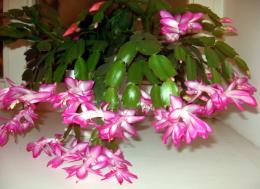
A plant that is completely unsightly in the summer, with hanging light green branches, turns into a beautiful flower with the arrival of winter. For the Christmas holidays, the tips of the leaves of the Decembrist produce buds, which bloom over time, turning into soft pink or reddish flowers of extraordinary beauty. They crown all the hanging edges of the branches and create the impression of summer in the middle of winter.
But in order for the plant to bloom on time and have an attractive appearance, the Decembrist flower must be properly cared for. If this is done incorrectly, it may not only not release color, but may even die.
Content:
- Caring for flowers by Decembrists
- What diseases do Decembrist flowers have?
- How Decembrist flowers reproduce and are transplanted
- How to water and feed Decembrists
Caring for flowers by Decembrists
Decembrist belongs to the cactus family, but caring for it is slightly different from maintaining prickly plants. In appearance, our Decembrist doesn’t look much like a cactus, but you can’t call it an ordinary deciduous flower either. The plant is not very whimsical, but there are still some nuances.
Secrets of caring for the Decembrist:
- Do not place the plant in direct sunlight or on windows through which the sun shines. The stems of the flower will begin to dry out, and its growth will slow down significantly. Sometimes the outermost cuttings die off, which results in late flowering or no flowering at all.
- In the summer, it is recommended to take the Decembrist outside, on a loggia or balcony, if it is cool there and there are no scorching rays. Sometimes they are even buried in the ground in the shady part of the garden plot. Thus, the plant will be enriched with useful substances and will survive the winter well.
- If the plant is left at home, then the best place for it would be a darkened window or partial shade created by a curtain or blinds. The temperature regime does not exert much pressure on the Decembrist; he can survive both heat and cold (from +4 to +35 degrees). But the flower grows and develops better when the lower edge is +18 degrees and the upper edge is +24.
- Proper formation of the crown of the plant allows you to improve its appearance and obtain abundant flowering. This is done in mid-June, unscrewing crooked and dried outer cuttings. It is by unscrewing, and not cutting off, that the damaged areas heal and are restored faster.
- If, while replanting the plant as planned, you notice that the roots are damaged or rotten, they should be washed with hot water + 36 degrees. After this, remove all damage and replant in new soil.
Proper care behind a Decembrist flower will allow you to see the beauty on your windowsill every year. The flower itself is a long-lived plant and can live for more than 20 years. Of course, the older he gets, the more care he requires.
What diseases do Decembrist flowers have?
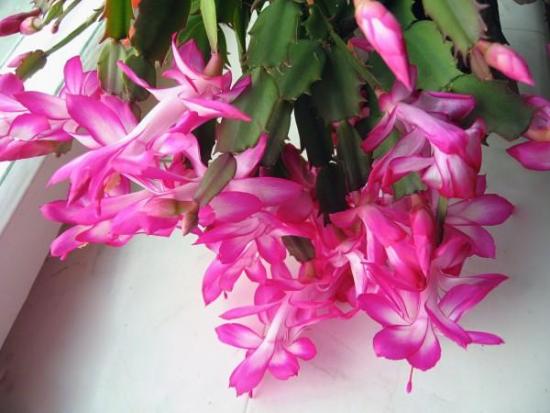
Like all indoor plants, Decembrist sometimes gets sick. Diseases of the inhabitants of home green spaces mean all deviations in the appearance and functioning of the plant.
What harms the Decembrist?
- Fungal diseases
- Harmful insects
- Improper watering
- Fertilizer applied at the wrong time
Often, after transplanting a plant, fungal infections are introduced into the new soil: phytium, late blight or fusarium. The leaves become pale and limp, even with intensive watering. In this case, it is necessary to treat the flower with an appropriate preparation and replant it in new, disinfected soil.
In case of defeat spider mite, the Decembrist is covered with rusty stains, these are tiny insects of brownish, yellowish and even dark red colors. Plant infection occurs as a result of very dry air in the room.
Small white lumps on the plant indicate the appearance of a pest such as mealybugs. They, like spider mites, can be gotten rid of by spraying with special means.
Diseases of the Decembrist flower also include the death of the plant's root system. The hanging branches lose energy, become sluggish and lifeless, and the bush itself moves easily in the ground, which means that the roots have died off. This happens when an overheated plant is watered with cold water or is overcooled, as well as when there is an overdose of fertilizers. This condition of the flower is saved by transplanting it into new soil.
Disease-causing conditions also include the Decembrist not releasing color. This happens due to violation of feeding periods, as well as due to excessive watering in October and November. During these months, it is unnecessary to fertilize the plant, and the dose of watering should be reduced as much as possible; only from the beginning of December, the flower must be saturated with moisture as much as possible. And by the end of December you will be able to get the long-awaited flowering.
How Decembrist flowers reproduce and are transplanted
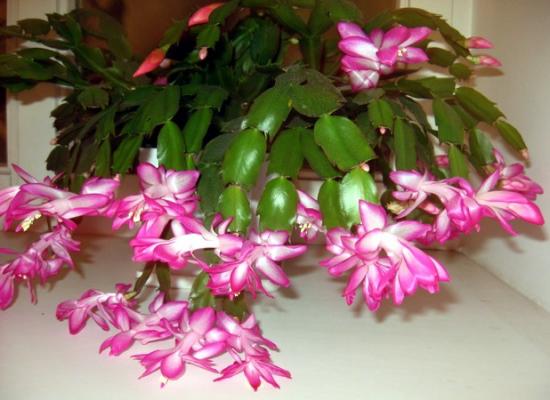
Decembrists propagate flowers by cuttings, plucking 2-3 segments from the edge of a branch.Then the cuttings are allowed to rest for a couple of days and planted in prepared soil, covered with a plastic cup on top.
Land for landing prepared in advance, taking equal proportions of turf soil, peat, sand and leaf humus. The pot is filled one quarter with drainage so that the root system does not rot due to stagnation of water, and there is access to air. The planted plant is placed in the shade, often ventilated and constantly watered. Cuttings take root better at a temperature of +18 - +20 degrees.
Plant replanting, like cuttings, is carried out at the end of winter or in the spring, after the Decembrist flower has faded. Drainage and high-quality soil must be prepared in advance and disinfected. The superficial rhizome allows the use of shallow pots for Decembrists. Young plants are recommended to be replanted every year, while mature flowers can be replanted once every 3-4 years.
How to water and feed Decembrists
Decembrists should be watered in moderation so that the water does not stand and the ground around the flower is not constantly wet. If the room temperature is lower than +14 degrees, it is not recommended to frequently moisten the soil. If a flower overheats, you should not moisten it with cold water; this can have a detrimental effect on the root system.
The procedure is carried out with pre-settled water at room temperature. In summer, it is recommended to alternate watering with spraying. Regularly wash away dust from flower branches using irrigation, covering the ground with plastic film.
Feeding of the Decembrist is carried out according to the schedule. It should be carried out in summer, as well as in early September, one procedure per month.After this, all complementary foods are finished, and the plant is given the opportunity to “fall asleep” before flowering. During this period, watering is also limited. At the beginning of December, the flower is placed in a brighter place, they begin to water more intensively and fertilize. Thus, having “awakened” the Decembrist, you will get flowering before the new year.
With proper care, your Decembrist flower will always be healthy and attractive. Remember that he loves moderate watering, moist air, spraying and root feeding. It does not tolerate extreme heat and direct sunlight; its root system is afraid of cold watering. Our winter beauty does not like sudden changes in temperature and moving the pot to another place during the period of bud setting and flowering itself.
Video guide on proper care of the Decembrist:
Interesting information about the vegetable garden



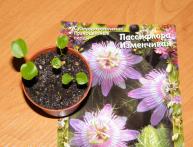
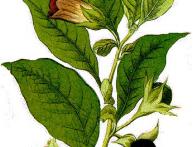



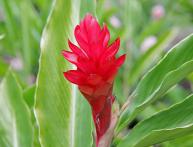
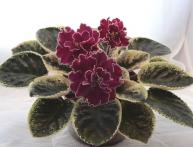

Comments
Please tell me how best to form the Decembrist so that it is not very spreading. The plant is young, planted in September last year. Thank you.
In the spring I shorten the branches of the Decembrist precisely by twisting the cuttings, in late autumn in October I put it in a shaded place - I create a kind of stress, and at the end of November, on the contrary, I put it in a bright place and wait for flowering.